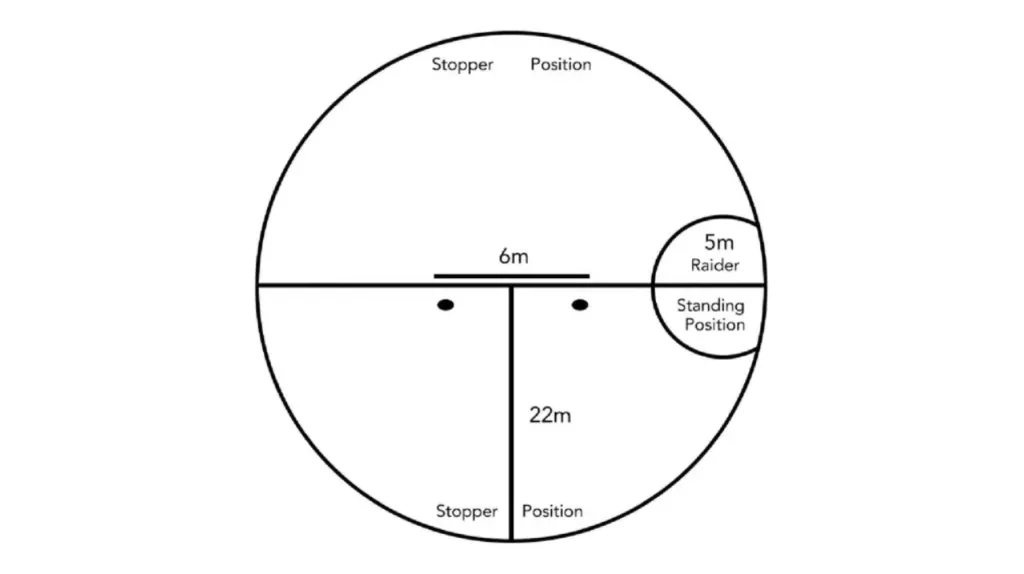What is the difference between standard and circle Kabaddi?

(Courtesy : Pro Kabaddi League)
Differences within the rules between the two styles have sparked an extended debate among the loyal audience of the sport.
The sport of Kabaddi has always focused more on the grassroots level. Within the Indian subcontinent, countries like Pakistan, Sri Lanka and Nepal are building up their reputation over the years in the sport. The onset of the professional Kabaddi league within the country was ready to generate the much-needed popularity and views that the sport appeared to be lacking a couple of years ago.
But, unlike many other sports, this ultimate contact game has the privilege to arrange itself in two different formats. They are– the standard style and the circle style. Although the character of the game remains the same, certain distinctions within the rules between the two styles have sparked an extended debate among the loyal audience of the sport.
Some circle Kabaddi players have also played in the Pro Kabaddi League (PKL). Bengal Warriors' all-rounder Ran Singh has had his fair share of experience in circle Kabaddi. Former PKL winner and Khel Now's expert Mohit Chhillar said, " In standard Kabaddi, seven players get on the mat, whereas in circle Kabaddi eight players start the match. If a raider touches a defender in circle Kabaddi, then only that particular defender has to tackle the player. Unlike circle style, the whole team comes to tackle the raider in the standard style of Kabaddi."
He added, "Circle style also requires more energy as you have to tackle a player alone. Ran Singh has earned a lot of respect as a circle kabaddi player."
Here, we dive deep into the differences that set these two styles of the same sport apart.
Standard Style
Dimensions
As per the Amateur Kabaddi Federation of India (AKFI), Kabaddi mats in standard style should measure 13 meters x 10 meters, which might eventually form the playing court.
The mid-line divides the court into two equal halves. A baulk line is the first parallel line from the mid-line and measures 3.75 meters from the mid-line. The lobby is usually one meter in width and length. It becomes a part of the play when a raider touches the opponent's defender. The distance between the bonus and baulk line is one meter.
The weight criteria in the standard style of Kabaddi for men is about less than 85kg. For women, it is less than 75kg.
Scoring
The standard style allows for a bonus point. It happens the raider crosses over the bonus line with six or more defenders on the court.
The raider has the freedom to touch one or more defenders. Subsequently, the points are awarded in regard to the number of defenders he has touched on his way back.
Also, this style allows for an all-out, when all the seven players of the opposition are ruled out and the raiding team gets two extra points for it.
Circle Style
Dimensions

The sector is a circle with a radius of 22m. It is split into two equal halves by a mid-line in circle style. In this format, there are no lobbies or bonus lines.
The circle style of Kabaddi introduces a ‘Pala’ which is a gate in the middle of the playing field. Its total length is 6m. This pivotal line is typically three meters on all sides. Therefore, the raider must make sure that he reaches back to his own half through this pala.
The baulk line or the essential limit is a line drawn from the pala post. It has a radius of 6m on all sides of the mid-line forming a D on all sides. The circle style doesn’t impose any restrictions on weight. The rule says that eight players are going to be the active players, with five substitutions allowed per team.
Scoring
The out and revival rules are not applicable in circle style and the defenders are known as ‘anti-raiders’ or ‘anti.’ The raider can touch only one anti during his raid. In case he touches more than one, the defensive team gets a point.
If the raider returns safely without scoring back to his court, the opponent team gets a single point. Another rule that's prevalent is that if a raid is not completed in 30 seconds, the opponent team will score a point.
The concept of ‘self-out’ is also seen in the circle style of Kabaddi. If any player is pushed out of the border during the course of play, one point is additionally awarded.
For more updates, follow Khel Now Kabaddi on Facebook, Twitter, Instagram and join our community on Telegram.
- Kabaddi Champions League Haryana auction date announced
- Pakistan's Kabaddi player lands in huge trouble for representing Indian team
- Patna Pirates release assistant coach Prashanth Rai ahead of PKL 13
- Kabaddi to debut at South East Asian Games 2025
- PKL 13: UP Yoddhas appoint Upendra Malik as new head coach for upcoming season